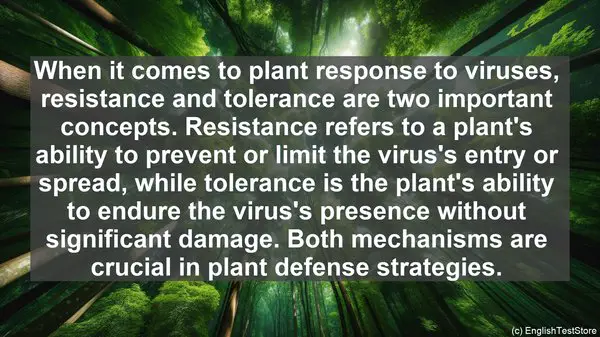Introduction
Welcome to today’s lesson. In the field of plant virology, there are several words that often cause confusion. Understanding these words correctly is crucial for a comprehensive understanding of the subject. So, let’s dive in and explore the top 10 commonly confused words in plant virology.

1. Virus vs. Viroid
The terms ‘virus’ and ‘viroid’ are often used interchangeably, but they are not the same. A virus is a small infectious agent that requires a host cell to replicate, while a viroid is a smaller infectious agent that can replicate autonomously. So, while both are pathogens, they differ in their structure and replication mechanisms.

2. Symptom vs. Sign
When studying plant diseases, it’s important to differentiate between symptoms and signs. Symptoms are the visible effects of a disease on a plant, such as wilting or discoloration, while signs are physical evidence of the pathogen, like fungal spores or insect eggs. Understanding this distinction helps in accurate disease diagnosis.
3. Vector vs. Reservoir
In the context of plant viruses, a vector is an organism, often an insect, that transmits the virus from one plant to another, while a reservoir is a plant or organism that harbors the virus without showing symptoms. Vectors play a crucial role in the spread of plant viruses, while reservoirs serve as potential sources of infection.
4. Horizontal vs. Vertical Transmission
When it comes to the spread of plant viruses, there are two primary modes: horizontal and vertical transmission. Horizontal transmission occurs between plants, often through vectors, while vertical transmission happens from a parent plant to its offspring, either through seeds or vegetative propagation. Both modes contribute to the overall spread of viruses.
5. Endemic vs. Epidemic
These terms describe the prevalence of a disease in a population. Endemic refers to a disease that is consistently present at a relatively low level, while an epidemic is a sudden increase in the number of cases, often affecting a larger population. Understanding the dynamics of endemicity and epidemics helps in disease management strategies.
6. Resistance vs. Tolerance
When it comes to plant response to viruses, resistance and tolerance are two important concepts. Resistance refers to a plant’s ability to prevent or limit the virus’s entry or spread, while tolerance is the plant’s ability to endure the virus’s presence without significant damage. Both mechanisms are crucial in plant defense strategies.
7. Serology vs. Molecular Techniques
In virus detection and identification, two common approaches are serology and molecular techniques. Serology involves the use of antibodies to detect viral antigens, while molecular techniques, like PCR, analyze the virus’s genetic material. Both methods have their advantages and are often used in combination for accurate diagnosis.
8. Quarantine vs. Eradication
When dealing with a new or highly infectious plant virus, two strategies are often employed: quarantine and eradication. Quarantine involves isolating and restricting the movement of infected plants or materials, while eradication aims to completely eliminate the virus from a specific area. The choice of strategy depends on various factors, including the virus’s characteristics and the feasibility of control measures.
9. Phloem vs. Xylem
In plant anatomy, the phloem and xylem are two important vascular tissues. The phloem transports sugars and other organic compounds, while the xylem primarily carries water and minerals. Understanding the role of these tissues is crucial in studying the movement and distribution of viruses within a plant.
10. Host Range vs. Host Specificity
When studying plant viruses, it’s important to consider their host range and host specificity. The host range refers to the range of plant species a virus can infect, while host specificity describes the virus’s ability to infect specific plant species or even cultivars. These factors have implications for disease management and the potential impact of a virus on different crops.
